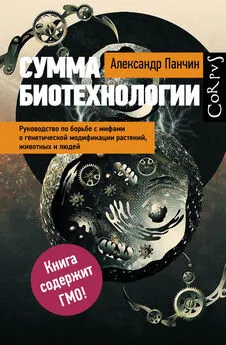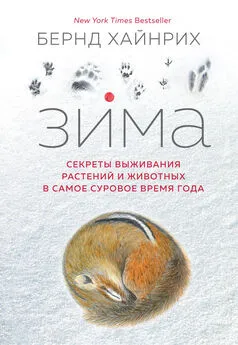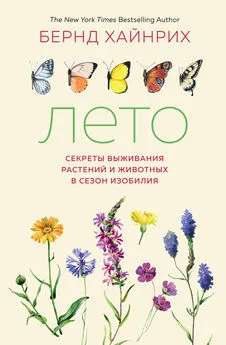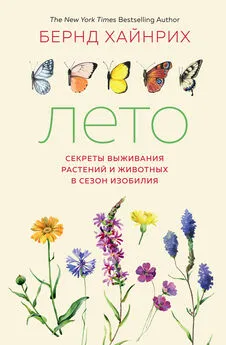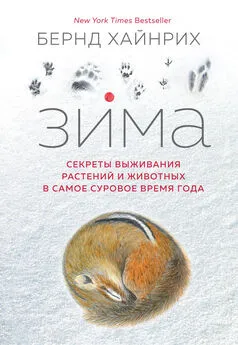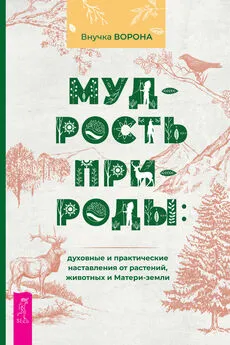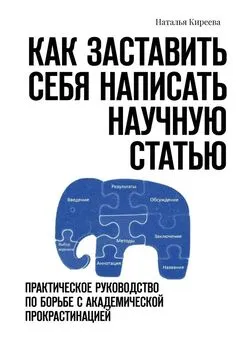Александр Панчин - Сумма биотехнологии. Руководство по борьбе с мифами о генетической модификации растений, животных и людей
- Название:Сумма биотехнологии. Руководство по борьбе с мифами о генетической модификации растений, животных и людей
- Автор:
- Жанр:
- Издательство:АСТ: CORPUS
- Год:2016
- Город:Москва
- ISBN:978-5-17-093602-1
- Рейтинг:
- Избранное:Добавить в избранное
-
Отзывы:
-
Ваша оценка:
Александр Панчин - Сумма биотехнологии. Руководство по борьбе с мифами о генетической модификации растений, животных и людей краткое содержание
Сумма биотехнологии. Руководство по борьбе с мифами о генетической модификации растений, животных и людей - читать онлайн бесплатно ознакомительный отрывок
Интервал:
Закладка:
252. Jouanin L. et al.: Lignification in transgenic poplars with extremely reduced caffeic acid O-methyltransferase activity. Plant Physiol 2000, 123(4):1363–74.
253. Sheehy R.E. et al.: Reduction of polygalacturonase activity in tomato fruit by antisense RNA. Proc Natl Acad Sci USA 1988, 85(23):8805–9.
254. Tuteja J.H. et al.: Tissue-specific gene silencing mediated by a naturally occurring chalcone synthase gene cluster in Glycine max. Plant Cell 2004, 16(4):819–35.
255. Todd J.J., Vodkin L.O.: Duplications That Suppress and Deletions That Restore Expression from a Chalcone Synthase Multigene Family. Plant Cell 1996, 8(4):687–99.
256. Parrott W. et al.: Application of food and feed safety assessment principles to evaluate transgenic approaches to gene modulation in crops. Food Chem Toxicol 2010, 48(7):1773–90.
257. Denis M. et al.: Expression of Engineered Nuclear Male Sterility in Brassica napus (Genetics, Morphology, Cytology, and Sensitivity to Temperature). Plant Physiol 1993, 101(4):1295–304.
258. Granzier H.L., Labeit S.: The giant muscle protein titin is an adjustable molecular spring. Exerc Sport Sci Rev 2006, 34(2):50–3.
259. Bang M.L. et al.: The complete gene sequence of titin, expression of an unusual approximately 700-kDa titin isoform, and its interaction with obscurin identify a novel Z-line to I-band linking system. Circ Res 2001, 89(11):1065–72.
260. Neves G. et al.: Stochastic yet biased expression of multiple Dscam splice variants by individual cells. Nat Genet 2004, 36(3):240–6.
261. Hattori D. et al.: Dscam-mediated cell recognition regulates neural circuit formation. Annu Rev Cell Dev Biol 2008, 24:597–620.
262. Noren C.J. et al.: Dissecting the Chemistry of Protein Splicing and Its Applications. Angew Chem Int Ed Engl 2000, 39(3):450–66.
263. Holley R.W. et al.: Nucleotide Sequences in the Yeast Alanine Transfer Ribonucleic Acid. J Biol Chem 1965, 240:2122–8.
264. Min Jou W. et al.: Nucleotide sequence of the gene coding for the bacteriophage MS2 coat protein. Nature 1972, 237(5350):82–8.
265. Maxam A.M., Gilbert W.: A new method for sequencing DNA. Proc Natl Acad Sci USA 1977, 74(2):560–4.
266. Sanger F. et al.: DNA sequencing with chain-terminating inhibitors. Proc Natl Acad Sci USA 1977, 74(12):5463–7.
267. Smith L.M. et al.: Fluorescence detection in automated DNA sequence analysis. Nature 1986, 321(6071):674–9.
268. Fleischmann R.D. et al.: Whole-genome random sequencing and assembly of Haemophilus influenzae Rd. Science 1995, 269(5223):496–512.
269. Genome sequence of the nematode C. elegans: a platform for investigating biology. Science 1998, 282(5396):2012–8.
270. Analysis of the genome sequence of the flowering plant Arabidopsis thaliana. Nature 2000, 408(6814):796–815.
271. Staden R.: A strategy of DNA sequencing employing computer programs. Nucleic Acids Res 1979, 6(7):2601–10.
272. Adams M.D. et al.: The genome sequence of Drosophila melanogaster. Science 2000, 287(5461):2185–95.
273. Venter J.C. et al.: The sequence of the human genome. Science 2001, 291(5507):1304–51.
274. Lander E.S. et al.: Initial sequencing and analysis of the human genome. Nature 2001, 409(6822):860–921.
275. Initial sequence of the chimpanzee genome and comparison with the human genome. Nature 2005, 437(7055):69–87.
276. Yunis J.J., Prakash O.: The origin of man: a chromosomal pictorial legacy. Science 1982, 215(4539):1525–30.
277. Fan Y. et al.: Genomic structure and evolution of the ancestral chromosome fusion site in 2q13-2q14.1 and paralogous regions on other human chromosomes. Genome Res 2002, 12(11):1651–62.
278. Eid J. et al.: Real-time DNA sequencing from single polymerase molecules. Science 2009, 323(5910):133–8.
279. Mikheyev A.S., Tin M.M.: A first look at the Oxford Nanopore MinION sequencer. Mol Ecol Resour 2014, 14(6):1097–102.
280. Chan I.S., Ginsburg G.S.: Personalized medicine: progress and promise. Annu Rev Genomics Hum Genet 2011, 12:217–44.
281. El-Sohemy A. et al.: Coffee, CYP1A2 genotype and risk of myocardial infarction. Genes Nutr 2007, 2(1):155–6.
282. Muramatsu T. et al.: Alcohol and aldehyde dehydrogenase geno types and drinking behavior of Chinese living in Shanghai. Hum Genet 1995, 96(2):151–4.
283. Bierut L.J. et al.: ADH1B is associated with alcohol dependence and alcohol consumption in populations of European and African ancestry. Mol Psychiatry 2012, 17(4):445–50.
284. Venter J.C. et al.: Environmental genome shotgun sequencing of the Sargasso Sea. Science 2004, 304(5667):66–74.
285. Turnbaugh P.J. et al.: The human microbiome project. Nature 2007, 449(7164):804–10.
286. Arumugam M. et al.: Enterotypes of the human gut microbiome. Nature 2011, 473(7346):174–80.
287. Lamendella R. et al.: Comparative fecal metagenomics unveils unique functional capacity of the swine gut. BMC Microbiol 2011, 11:103.
288. Tazume S. et al.: Effects of germfree status and food restriction on longevity and growth of mice. Jikken Dobutsu 1991, 40(4):517–22.
289. Oresic M. et al.: Gut microbiota affects lens and retinal lipid composition. Exp Eye Res 2009, 89(5):604–7.
290. Ridaura V.K. et al.: Gut microbiota from twins discordant for obesity modulate metabolism in mice. Science 2013, 341(6150):1241214.
291. Vasquez A. et al.: Vaginal lactobacillus flora of healthy Swedish women. J Clin Microbiol 2002, 40(8):2746–9.
292. Tuzhikov A. et al.: TUIT, a BLAST-based tool for taxonomic classification of nucleotide sequences. Biotechniques 2014, 56(2):78–84.
293. Bercik P. et al.: Microbes and the gut-brain axis. Neurogastroenterol Motil 2012, 24(5):405–13.
294. Foster J.A., McVey Neufeld K.A.: Gut-brain axis: how the microbiome influences anxiety and depression. Trends Neurosci 2013, 36(5):305–12.
295. Cryan J.F., Dinan T.G.: Mind-altering microorganisms: the impact of the gut microbiota on brain and behaviour. Nat Rev Neurosci 2012, 13(10):701–12.
296. Panchin A.Y. et al.: Midichlorians – the biomeme hypothesis: is there a microbial component to religious rituals? Biol Direct 2014, 9:14.
297. Brenner S.R.: Blue-green algae or cyanobacteria in the intestinal micro-flora may produce neurotoxins such as Beta-N-Methylamino-L-Alanine (BMAA) which may be related to development of amyotrophic lateral sclerosis, Alzheimer’s disease and Parkinson-Dementia-Complex in humans and Equine Motor Neuron Disease in horses. Med Hypotheses 2013, 80(1):103.
298. Bhattacharjee S., Lukiw W.J.: Alzheimer’s disease and the microbiome. Front Cell Neurosci 2013, 7:153.
299. Hirakawa H. et al.: Dissection of the octoploid strawberry genome by deep sequencing of the genomes of Fragaria species. DNA Res 2014, 21(2):169–81.
300. Shimomura O. et al.: Extraction, purification and properties of aequorin, a bioluminescent protein from the luminous hydromedusan, Aequorea. J Cell Comp Physiol 1962, 59:223–39.
301. Prasher D.C. et al.: Primary structure of the Aequorea victoria green-fluorescent protein. Gene 1992, 111(2):229–33.
302. Chalfie M. et al.: Green fluorescent protein as a marker for gene expression. Science 1994, 263(5148):802–5.
303. Heim R. et al.: Improved green fluorescence. Nature 1995, 373(6516):663–4.
304. Matz M.V. et al.: Fluorescent proteins from nonbioluminescent Anthozoa species. Nat Biotechnol 1999, 17(10):969–73.
305. Terskikh A. et al.: “Fluorescent timer”: protein that changes color with time. Science 2000, 290(5496):1585–8.
306. Livet J. et al.: Transgenic strategies for combinatorial expression of fluorescent proteins in the nervous system. Nature 2007, 450(7166):56–62.
307. Klein R.M. et al.: High-velocity microprojectiles for delivering nucleic acids into living cells. 1987. Biotechnology 1992, 24:384–6.
308. Daniell H. et al.: Transient foreign gene expression in chloroplasts of cultured tobacco cells after biolistic delivery of chloroplast vectors. Proc Natl Acad Sci USA 1990, 87(1):88–92.
309. Zambryski P. et al.: Ti plasmid vector for the introduction of DNA into plant cells without alteration of their normal regeneration capacity. EMBO J 1983, 2(12):2143–50.
310. Mojica F.J. et al.: Biological significance of a family of regularly spaced repeats in the genomes of Archaea, Bacteria and mitochondria. Mol Microbiol 2000, 36(1):244–6.
311. Pourcel C. et al.: CRISPR elements in Yersinia pestis acquire new repeats by preferential uptake of bacteriophage DNA, and provide additional tools for evolutionary studies. Microbiology 2005, 151(Pt 3):653–63.
312. Mojica F.J. et al.: Intervening sequences of regularly spaced prokaryotic repeats derive from foreign genetic elements. J Mol Evol 2005, 60(2):174–82.
313. Bolotin A. et al.: Clustered regularly interspaced short palindrome repeats (CRISPRs) have spacers of extrachromosomal origin. Microbiology 2005, 151(Pt 8):2551–61.
314. Makarova K.S. et al.: A putative RNA-interference-based immune system in prokaryotes: computational analysis of the predicted enzymatic machinery, functional analogies with eukaryotic RNAi, and hypothetical mechanisms of action. Biol Direct 2006, 1:7.
315. Barrangou R. et al.: CRISPR provides acquired resistance against viruses in prokaryotes. Science 2007, 315(5819):1709–12.
316. Jinek M. et al.: A programmable dual-RNA-guided DNA endonuclease in adaptive bacterial immunity. Science 2012, 337(6096):816–21.
317. Jinek M. et al.: RNA-programmed genome editing in human cells. Elife 2013, 2:e00471.
318. Wang H. et al.: One-step generation of mice carrying mutations in multiple genes by CRISPR/Cas-mediated genome engineering. Cell 2013, 153(4):910–8.
319. Gantz V.M., Bier E.: Genome editing. The mutagenic chain reaction: a method for converting heterozygous to homozygous mutations. Science 2015, 348(6233):442–4.
320. Liang P. et al.: CRISPR/Cas9-mediated gene editing in human tripronuclear zygotes. Protein Cell 2015, 6(5):363–72.
321. Ran F.A. et al.: Double nicking by RNA-guided CRISPR Cas9 for enhanced genome editing specificity. Cell 2013, 154(6):1380–9.
322. Tsai S.Q. et al.: Dimeric CRISPR RNA-guided FokI nucleases for highly specific genome editing. Nat Biotechnol 2014, 32(6):569–76.
323. Guilinger J.P. et al.: Fusion of catalytically inactive Cas9 to FokI nuclease improves the specificity of genome modification. Nat Biotechnol 2014, 32(6):577–82.
324. Davis K.M. et al.: Small molecule-triggered Cas9 protein with improved genome-editing specificity. Nat Chem Biol 2015, 11(5):316–8.
325. Maruyama T. et al.: Increasing the efficiency of precise genome editing with CRISPR-Cas9 by inhibition of nonhomologous end joining. Nat Biotechnol 2015, 33(5):538–42.
326. Chu V.T. et al.: Increasing the efficiency of homology-directed repair for CRISPR-Cas9-induced precise gene editing in mammalian cells. Nat Biotechnol 2015, 33(5):543–8.
327. Hemphill J. et al.: Optical Control of CRISPR/Cas9 Gene Editing. J Am Chem Soc 2015, 137(17):5642–5.
328. Nihongaki Y. et al.: Photoactivatable CRISPR-Cas9 for optogenetic genome editing. Nat Biotechnol 2015.
329. Chapman K.M. et al.: Targeted Germline Modifications in Rats Using CRISPR/Cas9 and Spermatogonial Stem Cells. Cell Rep 2015, 10(11):1828–35.
330. Gibson D.G. et al.: Creation of a bacterial cell controlled by a chemically synthesized genome. Science 2010, 329(5987):52–6.
331. Howard T.P. et al.: Synthesis of customized petroleum-replica fuel molecules by targeted modification of free fatty acid pools in Escherichia coli. Proc Natl Acad Sci USA 2013, 110(19):7636–41.
Читать дальшеИнтервал:
Закладка:
